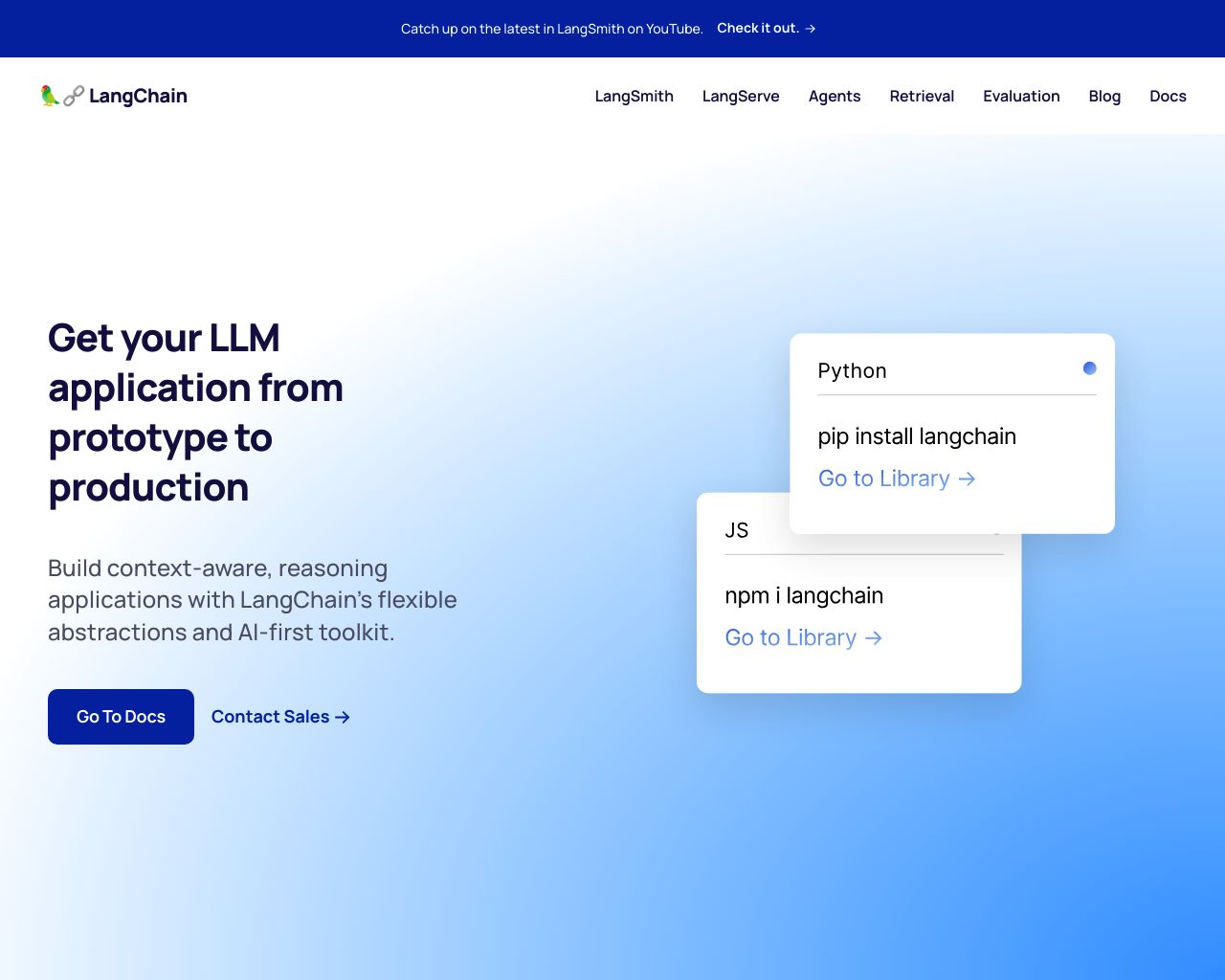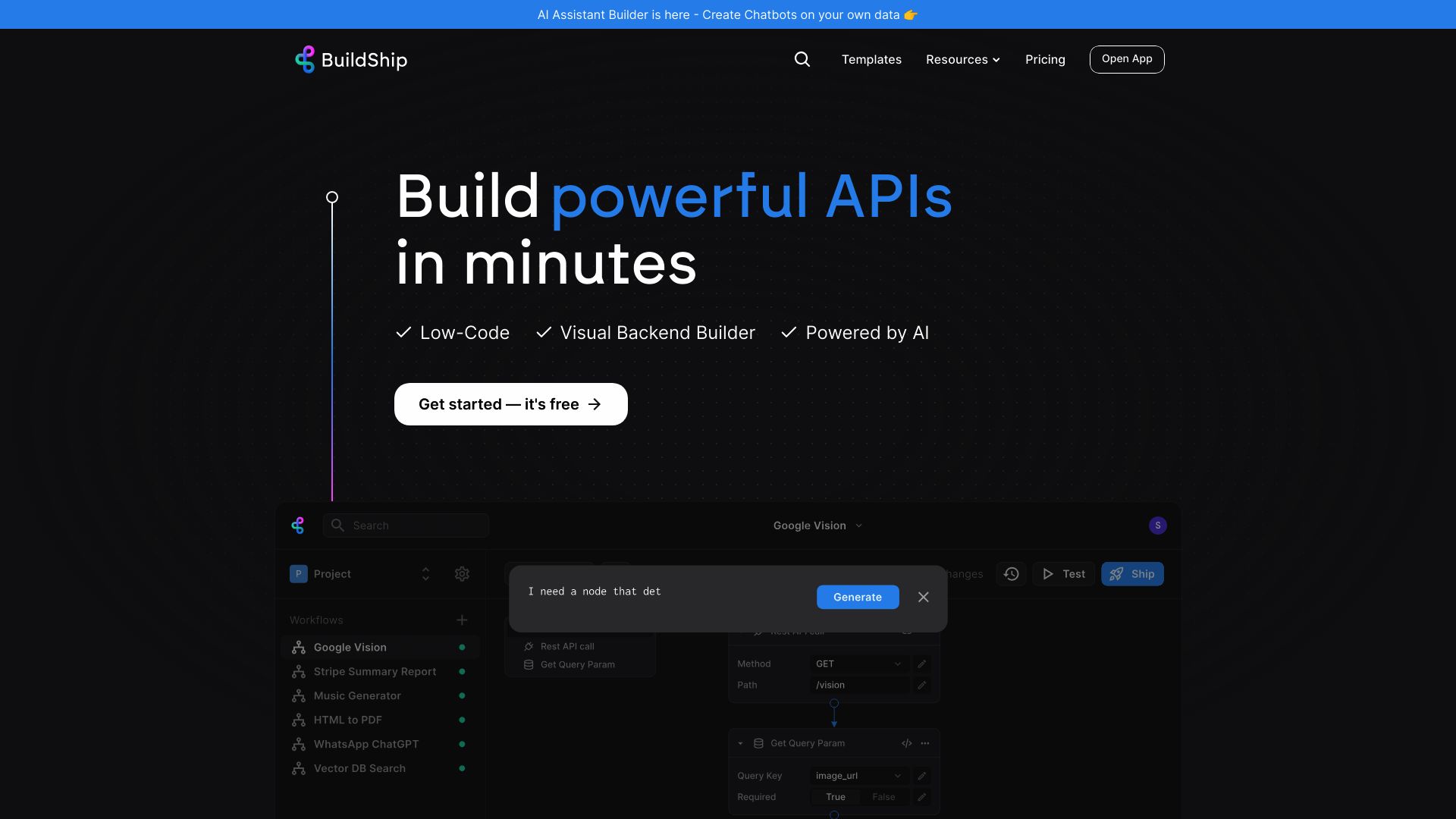LangChain vs. BuildShip: Comparing AI Development Platforms
AI development platforms have revolutionized how businesses create intelligent applications. LangChain vs. BuildShip, and SmythOS each offer unique approaches to harnessing the power of language models and workflow automation. This comparison explores their key features, development processes, and target audiences.
We’ll examine how LangChain’s comprehensive framework for AI applications stacks up against BuildShip’s visual no-code interface, and reveal why SmythOS emerges as the superior choice for businesses seeking to build and deploy AI agents rapidly. By the end, you’ll understand which platform best suits your needs, whether you’re a developer, business leader, or AI enthusiast looking to leverage cutting-edge AI technology.
LangChain Overview
LangChain empowers developers to build sophisticated applications powered by large language models (LLMs). This open-source framework simplifies the creation of AI-driven solutions by providing a comprehensive suite of tools and components.


LangChain’s modular architecture supports every stage of LLM application development. The platform offers LangGraph for building stateful agents, LangSmith for debugging and monitoring, and LangGraph Cloud for deploying production-ready APIs and assistants. These tools cater to both individual developers and enterprise teams seeking to leverage AI in their projects.
LangChain empowers developers to build sophisticated applications powered by large language models (LLMs). This open-source framework simplifies the creation of AI-driven solutions…
Key features of LangChain include the LangChain Expression Language (LCEL) for declarative component chaining, streaming support for improved latency, and advanced retrieval techniques like RAG. The platform integrates seamlessly with popular LLM providers and offers a wide range of components such as prompt templates, output parsers, and vector stores.
While LangChain excels in flexibility and integration capabilities, it requires a certain level of technical expertise to fully utilize its potential. The platform lacks a visual builder or no-code editor, which may present a steeper learning curve for non-technical users. However, for developers comfortable with coding, LangChain’s extensive documentation and active community provide ample support.
LangChain’s strength lies in its ability to orchestrate complex LLM workflows. The platform enables developers to create chatbots, question-answering systems, and autonomous agents that can reason, plan, and execute tasks. Its support for multimodal inputs and outputs further expands the possibilities for AI application development.
LangChain’s strength lies in its ability to orchestrate complex LLM workflows. The platform enables developers to create chatbots, question-answering systems, and autonomous agents…
In the competitive landscape of AI development tools, LangChain stands out for its comprehensive approach and open-source nature. While it may not offer the same level of user-friendliness as some commercial alternatives, its flexibility and powerful features make it a top choice for developers looking to push the boundaries of what’s possible with LLMs.
BuildShip Overview
BuildShip empowers users to create, test, and deploy backend workflows and APIs without extensive coding knowledge. The platform’s visual no-code interface streamlines the development process, allowing teams to build complex automations quickly and efficiently.
At its core, BuildShip offers a drag-and-drop workflow builder with pre-built nodes and AI-generated custom nodes. This powerful combination enables users to integrate various data sources, APIs, and AI models seamlessly. The platform supports writing custom logic in JavaScript or TypeScript for advanced functionality, catering to both non-technical users and experienced developers.
BuildShip excels in testing capabilities, providing tools to validate individual nodes and entire workflows. This iterative approach ensures robust, production-ready solutions. Once finalized, workflows deploy as high-performance APIs, ready for integration into existing applications. The platform also supports scheduled runs, automating routine tasks without manual intervention.
BuildShip empowers users to create, test, and deploy backend workflows and APIs without extensive coding knowledge. The platform’s visual no-code interface streamlines the development process…


BuildShip’s AI-powered features set it apart from traditional workflow builders. The platform leverages natural language processing to auto-fill inputs and generate custom nodes, significantly accelerating development. A comprehensive template library further speeds up the process, offering pre-built solutions for common use cases.
Security remains a top priority for BuildShip. The platform provides secure storage for API keys and secrets, ensuring sensitive information remains protected. While BuildShip offers robust features for workflow creation and API deployment, it lacks some advanced AI agent capabilities found in specialized AI platforms. However, its focus on backend automation and API development makes it a valuable tool for businesses looking to streamline their processes and create scalable, interconnected systems.
Feature Comparison
LangChain and BuildShip offer distinct approaches to AI development and workflow automation. LangChain excels in providing a comprehensive framework for building language model applications, while BuildShip focuses on visual workflow creation and API deployment.
LangChain’s strength lies in its extensive support for AI agent development. The platform offers tools like LangGraph for creating stateful, multi-actor applications with large language models. This capability enables developers to build sophisticated AI agents capable of complex reasoning and task execution. In contrast, BuildShip’s AI capabilities primarily center around workflow automation and integrating AI models into backend processes.
Security features highlight another area of divergence. LangChain emphasizes best practices for data protection but lacks explicit features for constrained alignment or IP control. BuildShip, on the other hand, provides secure storage for API keys and secrets, addressing a critical need for businesses handling sensitive data in their workflows. Both platforms support OAuth for API authentication, ensuring a baseline of security for integrations.
While both tools aim to simplify development, their approaches differ significantly. LangChain requires a certain level of technical expertise, offering powerful components for developers comfortable with coding. BuildShip takes a more accessible route with its visual no-code interface, allowing users to create complex automations without extensive programming knowledge. This distinction makes BuildShip more approachable for non-technical users, while LangChain caters to those seeking deeper customization and control over AI implementations.
Feature Comparison Table
| LangChain | BuildShip | SmythOS | |
|---|---|---|---|
| CORE FEATURES | |||
| Visual Builder | ❌ | ✅ | ✅ |
| No-Code Options | ❌ | ✅ | ✅ |
| Memory & Context | ✅ | ❌ | ✅ |
| Autonomous Agents | ✅ | ❌ | ✅ |
| Explainability & Transparency | ✅ | ❌ | ✅ |
| Multimodal | ✅ | ❌ | ✅ |
| Problem-Solving Capabilities | ✅ | ❌ | ✅ |
| Multi-Agent Collaboration | ✅ | ❌ | ✅ |
| Human-AI Interaction | ✅ | ❌ | ✅ |
| Audit Logs for Analytics | ✅ | ❌ | ✅ |
| Work as Team | ✅ | ❌ | ✅ |
| Agent Work Scheduler | ❌ | ✅ | ✅ |
| SECURITY | |||
| Constrained Alignment | ❌ | ❌ | ✅ |
| IP Control | ❌ | ✅ | ✅ |
| COMPONENTS | |||
| Foundation AIs | ✅ | ❌ | ✅ |
| Huggingface AIs | ✅ | ❌ | ✅ |
| Zapier APIs | ❌ | ❌ | ✅ |
| Classifiers | ✅ | ❌ | ✅ |
| Data Lakes | ❌ | ❌ | ✅ |
| DEPLOYMENT OPTIONS (EMBODIMENTS) | |||
| Deploy as Webhook | ❌ | ✅ | ✅ |
| Staging Domains | ❌ | ❌ | ✅ |
| Production Domains | ❌ | ❌ | ✅ |
| Deploy as Site Chat | ✅ | ❌ | ✅ |
| Deploy as Scheduled Agent | ❌ | ✅ | ✅ |
| Deploy as GPT | ✅ | ❌ | ✅ |
| DATA LAKE SUPPORT | |||
| Hosted Vector Database | ❌ | ❌ | ✅ |
| Sitemap Crawler | ❌ | ❌ | ✅ |
| YouTube Transcript Crawler | ❌ | ❌ | ✅ |
| URL Crawler | ❌ | ❌ | ✅ |
| PDF Support | ✅ | ❌ | ✅ |
| Word File Support | ❌ | ❌ | ✅ |
| TXT File Support | ✅ | ❌ | ✅ |
Best Alternative to LangChain and BuildShip
SmythOS stands out as the superior alternative to LangChain and BuildShip for AI agent development and deployment. Our platform combines the best of both worlds, offering a comprehensive solution that caters to developers, business users, and enterprises alike.
Unlike LangChain’s code-heavy approach or BuildShip’s limited AI capabilities, SmythOS provides a powerful visual builder that simplifies agent creation without sacrificing advanced functionality. We empower users to design complex AI workflows through an intuitive drag-and-drop interface, making sophisticated AI development accessible to a broader audience.
SmythOS provides a powerful visual builder that simplifies agent creation without sacrificing advanced functionality.
SmythOS excels in multi-agent collaboration and autonomous agent capabilities, features notably absent in BuildShip. Our platform enables the creation of intelligent agent teams that can work together seamlessly, tackling complex tasks with greater efficiency. This collaborative approach sets SmythOS apart, offering unparalleled problem-solving capabilities for businesses of all sizes.
Security and scalability are paramount in SmythOS. We offer robust features like constrained alignment and IP control, ensuring your AI agents operate within defined parameters and maintain data integrity. Our platform supports various deployment options, including APIs, webhooks, and scheduled agents, providing the flexibility to integrate AI solutions into existing workflows seamlessly.
With SmythOS, users gain access to a wide array of AI models and integrations, including foundation AIs and Hugging Face models. This versatility, combined with our support for multimodal interactions and extensive data handling capabilities, positions SmythOS as the most comprehensive and adaptable AI agent builder in the market. Whether you’re a developer seeking deep customization or a business user looking for quick deployment, SmythOS delivers the tools and support needed to bring your AI vision to life.
Conclusion
LangChain and BuildShip offer powerful solutions for AI development and workflow automation, each with unique strengths. LangChain excels in providing a comprehensive framework for building sophisticated language model applications, while BuildShip shines with its visual no-code interface for creating backend workflows and APIs.
SmythOS, however, emerges as the superior choice, combining the best of both worlds. Our platform offers a user-friendly drag-and-drop interface, extensive API integrations, and support for various AI models, making advanced AI functionalities accessible to users of all technical backgrounds. SmythOS’s ability to deploy AI agents across multiple platforms, from chatbots to APIs, sets it apart in versatility and scalability.
For businesses and developers seeking to harness the full potential of AI, SmythOS provides unparalleled value. Our platform’s comprehensive features, including multi-agent collaboration, advanced security measures, and seamless deployment options, make it the ideal choice for creating and managing AI-driven solutions.
We invite you to explore our diverse range of AI-powered agent templates and experience the SmythOS advantage firsthand. Create a free SmythOS account today and join the AI revolution. With our platform, you’ll build and deploy AI agents 99% faster, transforming your workflows and driving innovation in your industry.
Last updated:
Disclaimer: The information presented in this article is for general informational purposes only and is provided as is. While we strive to keep the content up-to-date and accurate, we make no representations or warranties of any kind, express or implied, about the completeness, accuracy, reliability, suitability, or availability of the information contained in this article.
Any reliance you place on such information is strictly at your own risk. We reserve the right to make additions, deletions, or modifications to the contents of this article at any time without prior notice.
In no event will we be liable for any loss or damage including without limitation, indirect or consequential loss or damage, or any loss or damage whatsoever arising from loss of data, profits, or any other loss not specified herein arising out of, or in connection with, the use of this article.
Despite our best efforts, this article may contain oversights, errors, or omissions. If you notice any inaccuracies or have concerns about the content, please report them through our content feedback form. Your input helps us maintain the quality and reliability of our information.
